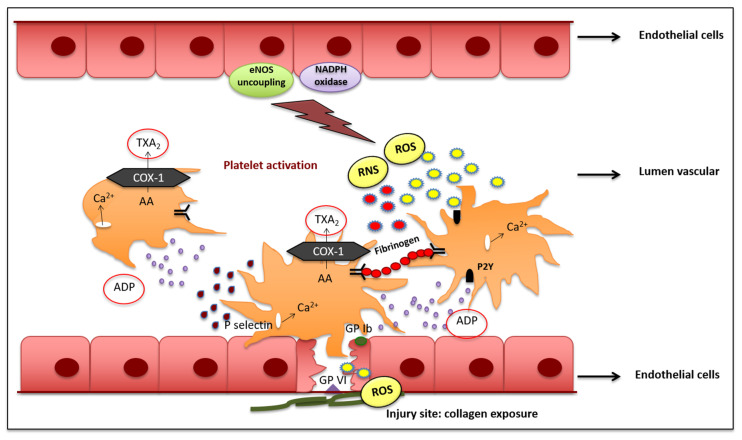Figure 1.
Platelet activation following exposure to collagen at the injury site and the production of free radicals. Protein tyrosine-phosphatases (PTPs) are the primary targets of ROS which, in turn, drive the upregulation of GPVI signaling. This event results in the overstimulation of platelets, inducing cytosolic calcium mobilization and the release of proaggregating factors from granules. Due to endothelial dysfunction, uncoupled eNOS uncoupling and NOX activation lead to the overproduction of ROS and RNS which are able to interact with platelets through the ADP receptor, triggering the same intracellular signaling pathway. Furthermore, nitrogen peroxide triggers the activation of fibrinogen and the stabilization of the fibrin clot. Thus, endothelial dysfunction and platelet activation in primary hemostasis, both consequences of a pro-oxidant state, converge and amplify each other, causing important prothrombotic effects. AA: Arachidonic Acid; COX-1: Cyclooxygenase-1; GP Ib: glycoprotein Ib; GPVI: glycoprotein VI; eNOS: endothelial Nitric Oxide Synthase; NOX: NADPH oxidase; P2Y: Peptide 2Y; RNS: Reactive Nitrogen Species; ROS: Reactive Oxygen Species; TXA2: Thromboxane A2.

